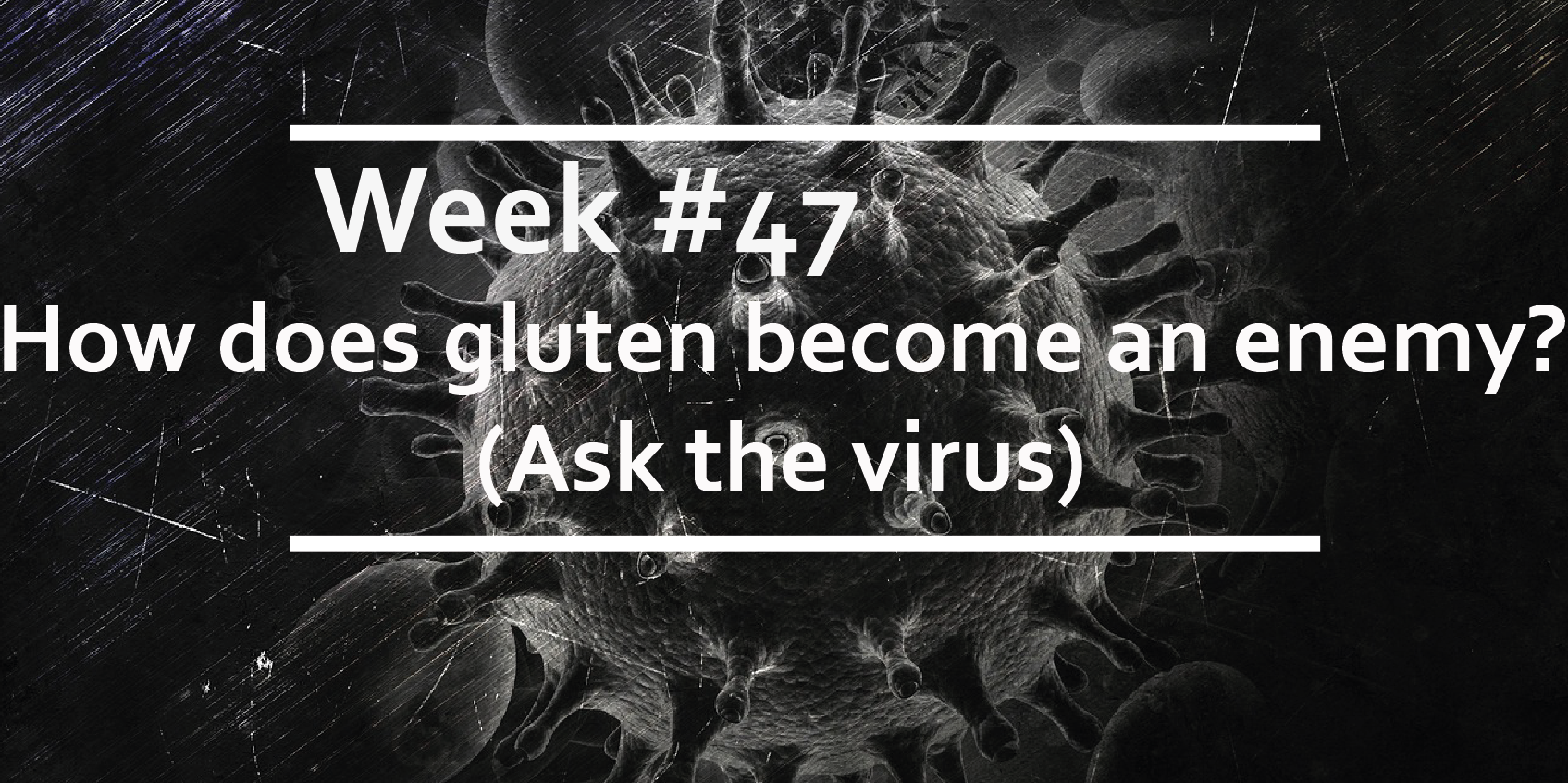How does gluten become an enemy? (Ask the virus)
Celiac disease is an immune-mediated disorder in which a pathologic immune response is mounted against otherwise harmless antigens present in gluten. This causes an abnormal TH1 inflammatory response, which severely damages the intestinal villi causing enteropathy and intestinal disorders.
While a genetic component is required to develop disease (individuals carrying human leukocyte antigens DQ2 or DQ8 are more susceptible to the disease), viruses have often been suggested to be important triggers of this TH1 response.
Recent studies by Bouziat and colleagues have shown that a particular strain of reovirus (the T1L strain) can trigger a TH1 inflammatory response against gluten. Reoviruses are double-stranded RNA viruses that infect the gastro-intestinal (GI) tract. So does every enteric virus have the potential to cause this pathogenic immune response?
Long term consequences of norovirus infection
To answer this question the same group set off to test the consequence of infection with norovirus, a positive sense RNA virus responsible for most acute gastroenteritis worldwide. Murine norovirus is an excellent model to study norovirus infection in vivo and it comes in different flavours: the acute strain SW3 and the persistent strain CR6, both used in this study.
The first observation was that only the acute SW3 strain caused loss of tolerance to orally administered antigens. At the same time of infection with either virus, mice were given a dose of ovalbumin (OVA). Only the CW3-infected mice developed a strong IgG2c antibody response to OVA, an indicator of TH1 response. Equally, subcutaneous administration of OVA caused greater swelling in CW3 infected mice.
Dendritic cells as master regulators of tolerance
Both tolerance and TH1 inflammatory response to dietary antigens develops in the mesenteric lymph nodes (mLN) and are mediated by the resident dendritic cells (DCs) that take up the dietary antigens and present them to naïve T cells. This encounter determines whether the naïve T cells will mature into tolerant regulatory T cells (Treg) or inflammatory TH1 cells.
CW3 activated all the DC subset tested to a larger extent that CR6, and in particular the CD103+ CD11b- CD8a+ subset, which takes up most OVA. Stronger TH1 cytokine response was also measured in this subset.
To test the hypothesis that these activated DCs can turn naïve T cells into TH1, mice were injected with naïve OVA-specific T cells and then infected with either strain of norovirus. Consistently with this hypothesis, conversion of naïve T cells into TH1 cells was observed upon infection with the CW3 strain.
A role for the capsid protein
But what causes these differences? The main differences between the SW3 and the CR6 strains are in the non-structural protein NS1/2 and in the major capsid protein VP1. VP1 in particular has been shown to make the virus virulent in immune-compromised mice and has been involved in recruitment of inflammatory cells to site of infection, so this protein constituted a good starting point.
Consistently, a CW3 strain carrying the CR6 VP1 failed to activate mLN DC, and to induce production of pro-inflammatory citokines in CD103+ CD11b- CD8a+ DCs and TH1 cells.
Immunological signatures
Next, the transcriptional signature upon infection with viruses that cause loss of tolerance to dietary antigens (norovirus CW3 and reovirus T1L) was compared to the one that followed infection with viruses that do not cause loss of tolerance (CR6, and CW3 with the CR6 capsid) at 48h. The two groups clustered separately and only 100 innate immunity genes were induced by all four viruses (protective antiviral response), while 396 genes were induced only by CW3 and T1L. These genes are involved in pathways associated with leukocyte activation, antigen presentation, chemotaxis, and NK cell mediated immunity, and several are associated with DC activation and TH1 response.
A very similar response upon infection with the two viruses that cause loss of tolerance suggested activation of a common pathogenic transcriptional profile in the mLN that, importantly, can be separated from the protective antiviral response induced by all viruses.
Interestingly, induction of the TH1 response is dependent on IRF-1 activation, as in irf-/- mice no TH1 response could be observed even upon infection with CW3.
Outlook
Would it be possible to separate protective from inflammatory immune response? And how could this discovery be important in limiting celiac disease?
The authors suggest that a better knowledge of the viruses and the viral components that determine the inflammatory TH1 response could lead to vaccinations against those pathogens that are more likely to trigger disease, or against the pathogenic components that are responsible for inflammation.
Another important question is whether a combination of genetic factor and virus infection is sufficient to explain celiac disease, or if other environmental factors are involved. Given that this inflammatory response is not induced by all viruses of the same family but only by some that are able to stimulate a specific response, how far can these mouse studies reflect human infection? And do different human strains have different consequences?
This works makes a substantial step forward in understanding the link between viruses infecting the GI tract, the immune response they induce, and the consequences on pathogenesis.
Further work will be required to better understand the difference between different viruses and viral strains and in using this information for therapeutic purposes. What is clear is the involvement of viruses in more and more apparently unrelated human diseases.




